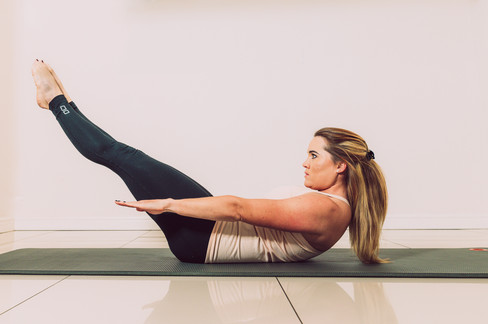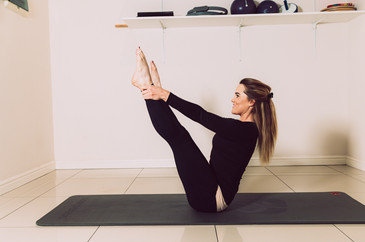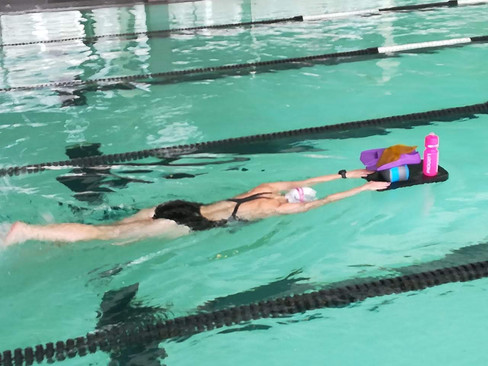
Without a doubt, Pilates is one of the most dynamic, functional, and beneficial exercises you can do to move your body. The best part about it is that anyone can do it. There are many misconceptions and myths related to what Pilates is about so let’s debunk Pilates.
1. Pilates and Yoga are basically the same.
Pilates and yoga share the same goal of bringing the mind, body, and spirit together through breathing and mindful movement. The body somatic techniques are different, as are the breathing techniques, and the principles within the work. Pilates was originally created for rehabilitating injured men during WW1. In contrast, yoga is seen as a path to spiritual enlightenment through a series of asanas. In practice, Yoga makes use of a mat while Pilates is practiced on a mat as well as a variety of other resistance-based apparatus/equipment.
2. Pilates is only for women
When devising a Pilates training programme, there is no such thing as a cookie-cutter programme. Although Pilates was originated for men, and by a man, we now see both genders taking advantage of what the work gives us. Each client has different goals, a different mind, and a body.
3. Pilates is only about core strength
“Core strength” is a trendy term used nowadays. It seems to describe the musculature of the trunk, especially those fundamental in stabilizing it. When the body has good core strength we cannot deny that movement is more efficient and the body is better protected from injury. However, Pilates addresses the “whole”: mind, body, spirit (the person in front of me, on that given day). The needs of each person are different as we all have individual goals and needs. What is good for one person’s body may not be good for another.
4. You need to be flexible to start Pilates
Flexibility is one of the benefits of practicing Pilates regularly. BASI Pilates allows for mindful, typically low-impact stretching through movement, while still making use of static and dynamic stretching appropriately for the individual to improve posture, mobility, and a greater range of motion in all planes and directions. For people who are hyper-mobile or who are overly flexible, the core conditioning creates joint stability and for them, the goal would be to balance strength and flexibility.
5. You need to be fit to do Pilates
The beauty of Pilates is that it is for everyone and it can be safely practiced if working with the correct instructor for your body. The exercise practice is adapted, modified, and tailor-made for the individual’s body, mind, goals, and needs. A typical week in a Pilates instructor’s schedule will include active agers, athletes, children, those requiring rehabilitation, pregnant moms, and just about anyone looking to get fit and stay injury-free.
6. Pilates can be practiced and taught by watching videos and attending short workshops
Pilates is a very sophisticated movement practice and is highly instruction-driven. It is just not an exercise regime that a learning instructor can teach from watching videos or attending big group setting classes. An instructor requires a good understanding and extensive study of human anatomy, equipment/apparatus, cueing, injuries and needs to have an eye for detail in identifying movement patterns in a body.
If you are looking to become a Pilates instructor I would highly recommend doing your: BASI (Body Arts and Science International) Pilates certification. This will take you anything from 6 months to 2 years to complete depending on if you are doing the mat or equipment course.
7. Pilates will make you lose weight
Pilates is a conditioning programme with a lot of health benefits and also complements any other fitness regime one chooses to do towards losing weight. Doing Pilates with a focus to lose weight will not necessarily give you the results you are looking for. Shedding excess weight requires an appropriate amount of cardio-vascular activity coupled with a healthy diet, sufficient sleep, and a good lifestyle. However, Pilates will tone, lengthen and change the shape of your muscles.
8. Pilates is easy
One tends to find Pilates easy if they are not doing the exercises the way it is meant to be done. Every single exercise from fundamental to master if done correctly, no matter what level you are, is challenging! Of course, our bodies are all different and what one client finds challenging another client may find slightly less challenging. But if the exercise is initiated from the right place in the body and the mind is present, all exercises have a challenging element to them. One needs to engage both dominant and non-dominant muscles to be able to do Pilates in good form. Pilates is not a superficial form of exercise - the work is extremely deep and the breathing mechanism used while exercising is good enough for one to break into a sweat. If the fundamentals or the principles of BASI Pilates – Awareness, Breath, Balance, Control, Concentration, Centering, Efficiency, Flow, Harmony, and Precision are not being incorporated while exercising, then it is not Pilates!
9. Pilates is boring and slow
Regular Pilates goers who enjoy an invigorating physical activity would never agree to Pilates being boring. Pilates encourages you to move mindfully, and work deeply into the body. When learning Pilates exercises they are slow to learn the precision required but as you learn the stability, so more mobility and speed can be incorporated. Both speeding up exercises and slowing them down has different benefits and add a challenge along the way. It takes awareness of your own body, control, and concentration to move efficiently from the instructed part of your body.

10. Pilates is done only on the mat, using a big ball or on the reformer
BASI (Body Arts and Science International) Pilates performed in a studio or from the comfort of your choice of destination (especially your home) will include a full-body workout. Exercises are practiced in many different positions, using many different tools – lying supine, lying prone, sitting, and standing. Apart from the mat, big ball, and the reformer, there are many other machines that are commonly used such as the Cadillac, the Wunda Chair, the Ladder Barrel, different sizes of Spine Correctors, along with resistance and support based props to name a few the magic circle, thera-band, big ball, small ball, and foam roller.

















































































Comentarios